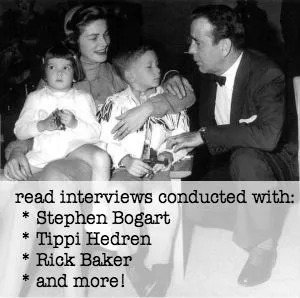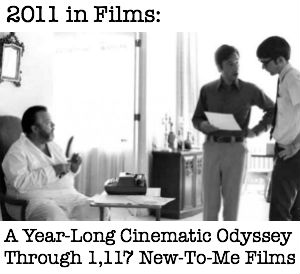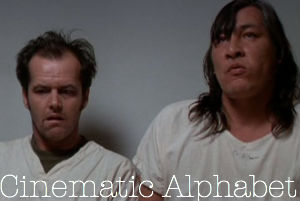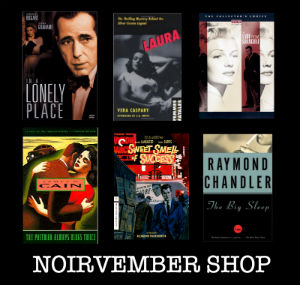Female Filmmaker Friday: She-Devil, 1989 (dir. Susan Seidelman)
Posted by Marya E. Gates
So this is week six of Female Filmmaker Friday and my fifth and final look the work of Susan Seidelman in the 1980s. I’ve really enjoyed delving into her work and I hope you guys have found some films you plan to see in the future.
These posters really show a lot about marketing. The first one makes the film look like it’s female vs. female (and I don’t even want to get into the societal implications of that), while the next one is a little more accurate in relation to the plot, but still plays with clichés about crazy ex-wives (which is kind of the plot, but is way too much of a simplification).
So the day before I watched this film, I started reading Naomi Wolf’s The Beauty Myth (which I still haven’t finished reading, mostly because it is really dense and really angry, but super fascinating). The first chapter lays out a pretty interesting theory about beauty in modern America, and mostly focuses on the post second wave feminism 1980s, which is when this film takes place. Actually, a lot of the themes explored in this film are the same themes explored in Wolf’s book. The film begins with homely housewife Ruth (Roseanne Barr) going to a department store to get a makeover and a new outfit for a big party she’s attending with her husband. It’s a great montage showing all the rituals of the makeover and the ways in which women judge themselves based on their outward appearance.
At the party, Ruth’s husband meets romance novels Mary Fisher (after Ruth spills red wine on her dress) and it’s pretty obvious what happens next. To take her mind off her husband’s infidelity, Ruth delves into her homemaking job and we get another great montage: plumbing, lawn-mowing, more beauty rituals, etc. Of course, none of these things help and all it manages to do is cause Ruth to be overstressed and have a breakdown, which in turn causes her husband to leave for the idyllic life he thinks he can have with Mary, away from his wife and kids. Wolf talks a lot about how unfair it is that “women’s work” often goes unpaid and there are some whopping statics about how much of the world’s work (including homemaking) are done by women, yet women are still underpaid compared to men.
After Ruth has discovered her husband’s affair, but before she’s made it known, there’s a great scene where it cuts from Meryl Streep about to give Ed Begley, Jr. a blow job to Roseanne chopping a cucumber. It’s brilliant.
After Ruth’s husband leaves her, she snaps and we get another great look at where her self-worth comes from: the mirror. What she sees is what society has deemed “ugly” and “ugly” means bad, so Ruth, regardless of all she’s done as wife and mother, feels nothing but bad.
That is, until she decides to get even. She makes a list of all the assets her husband has (which he actually told her earlier): his home, his family, his career and his freedom. She decides she’s going to take them all away and the rest of the plot of the film is in making that come to fruition. The first thing she takes away is his home, which she destroys in another wonderful montage, which culminates in what I think may be the most symbolic shot of the 1980s. This is the housewives’ rebellion. This is the end of the pink ghetto. This is what so much of the 1980s was fighting against; this is why women were so objectified in the advertisements and cinema of the 1980s. With equality men feel threatened, so objectification of women is the only way they see they can even the tables. In her book, Wolf delves into how this came to be and its ramifications on a whole generation of women.
Which brings us to Meryl as romance writer Mary Fisher, who is ultra-feminine, obsessed with beauty, and later we discover, lies about her age. Mary is trapped by the same beauty myth that Ruth is, just she’s trapped within its confines, rather than fighting to be a part of it. Ruth leaves her children with Mary and her husband, saying since their house is gone the kids have to live somewhere. There’s more to this part of the plot, but I don’t want to spoil the whole film for you.
After becoming “a mom” to her lover’s kids, Mary starts to experience the stress of trying to balance a working life and a home life. She begins to have a crisis of beauty, examining herself in the mirror much the same way Ruth did earlier in the film. In this moment you see the true power of the beauty myth; an “ugly” woman feels she is nothing, but so does a “beautiful” woman. Both women are trapped by the power society has put on beauty; if you aren’t beautiful, you are worthless as a woman. There’s a lot of really great moments in the scenes where Mary tries to learn how to be a mother and how to be part of a family. She benefits from Ruth’s “evil” plan in a way neither woman would have suspected.
Eventually, Ruth’s husband begins dicking around on Mary as well (old dogs, you know) and we get this amazing scene when Mary realizes where her life is headed. She’s in her ultra-pink bed and she is so gorgeous, but she is not happy. She goes through (in what looks like just one take) the gamut of emotions, from happy to sad and everything in between. This is one of greatest moments Meryl has ever brought to the silver screen.
Mary used to write romance novels that were far removed from reality and they sold well, but when she tries to write a more realistic romance novel (about a mother trying to balance her kids and her love life), the publisher doesn’t want it and her readership doesn’t want it. What does that say about society? Realism and romance can’t go hand in hand? Eventually, Mary goes through a transformation, coming out the other end a stronger woman because she’s learned how to balance romance and reality, love and family, feminism and femininity.
There’s more to Ruth’s plan, but I really don’t want to spoil all the delicious tricks she has up her sleeve for her husband. But I will say, Ruth, too has a transformation. She learns how to balance her home life with being a working woman setting up a temp firm that helps find jobs for women who otherwise couldn’t find work – there’s a montage with her interviewing a bunch of women who have “no job experience,” but who actually have a lot, it’s just all “women’s work” and housekeeping and helping their lousy ex-husbands with finances, etc. The very last shot, which is a self-assured Ruth walking away after giving her husband his last deserved comeuppance in a mass of women of all shapes and sizes, is another equally symbolic shot. This is a woman’s world, it is women who do most of the work in this world, and yet women are still treated as second-class citizens. It’s twenty-five years later, and not as much has changed as one would have hoped.
This movie really has so much to say and somehow I think most of the viewers were so unfamiliar with these ideas (this movie came out two years before The Beauty Myth), that it just went over everyone’s head. In the end, both women become whole, and live for themselves, in relation to themselves, rather than who they are in relation to a man. It’s a powerful film, packaged in dark comedic wrapping, and one that should be much more valued in the feminist film canon.
Posted on February 28, 2014, in Female Filmmaker Friday and tagged 1989, Ed Begley Jr., Meryl Streep, Roseanne Barr, She-Devil, Susan Seidelman. Bookmark the permalink. 10 Comments.
Leave a comment Cancel reply
This site uses Akismet to reduce spam. Learn how your comment data is processed.




























Thank you for putting this on my radar, i’ll be sure to check it out as well as the Beauty Myth. Always happy for more well written feminist inspiration (so i can make more art 😉 ❤
Great article 🙂
Thought you might be interested in this interview we just did with Susan Seidelman
I’m taking back control of my life, Bob!
Pingback: More Lady Directors, Van Heflin and New Releases: February 2014 in Films | the diary of a film history fanatic
Pingback: Female Filmmaker Friday: 2014 Wrap Up | the diary of a film history fanatic
Pingback: 2013 in Films: A 565 New-To-Me Films Year-End Recap | the diary of a film history fanatic
Pingback: 2014 in Films: A 365 New-To-Me Films Year-End Recap | the diary of a film history fanatic
Pingback: Female Filmmaker Friday | omen faces
Pingback: OLDFILMSFLICKER’S l FEMALE FILMMAKER FRIDAY!
Pingback: Female Filmmaker Friday: Desert Hearts, 1985 (dir. Donna Deitch) | the diary of a film history fanatic